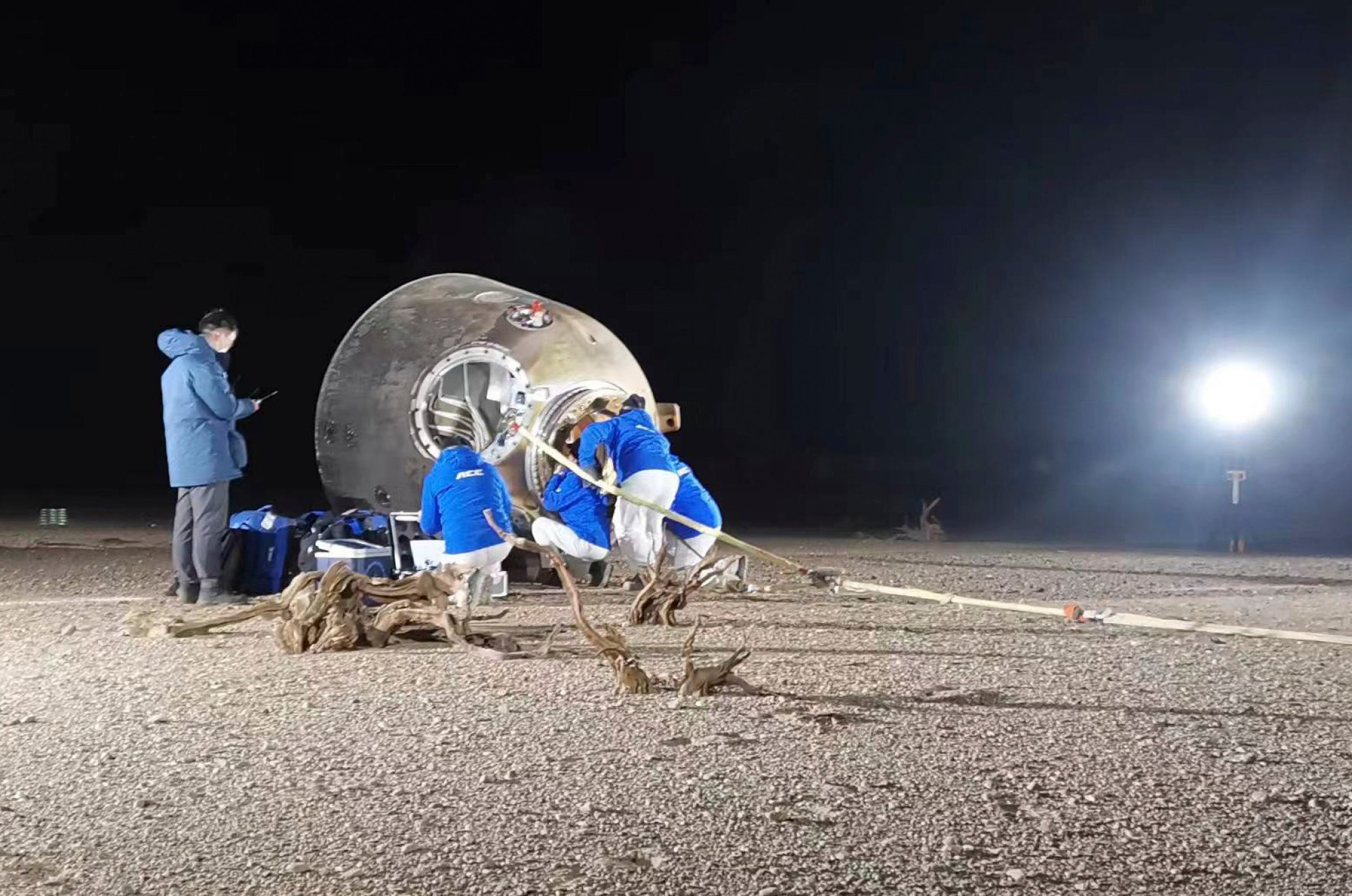
China’s space station assembled, Shenzhou-14 crew returns to Earth with 2 firsts
- Astronauts end their six-month mission on Tiangong with a landmark handover on the orbiter
- Space agency plans to launch two crewed space missions each year for the next decade
The Shenzhou-14 crew touched down at the Dongfeng landing site in north China’s Inner Mongolia autonomous region at 8.09pm, the CMSA said, about nine hours after their spacecraft separated from the space station.
It was the first landing at night in winter for China’s manned space programme, adding to the difficulty for search crews on the ground, Bian Hancheng, deputy chief designer of the landing site system for the programme, told China Youth Daily.
He added that the ground team had been prepared for the extreme conditions, as well as the possibility of the capsule landing upside down or damage to the spacecraft.
Quoting medical workers at the scene, People’s Daily reported that the astronauts were in good health. They had all emerged from the return capsule by about 9pm.
The crew – Chen Dong, Liu Yang and Cai Xuzhe – lived and worked on the Tiangong complex for 183 days on a mission to complete assembly of the permanent orbiting space station.
“I am very fortunate to have witnessed the completion of the basic structure of the Chinese space station after six busy and fulfilling months in space,” Chen, who was the first to exit the capsule, told CCTV. “Like meteors, we returned to the embrace of the motherland.”

China is only the only country other than Russia and the United States to have both put astronauts into space and built a space station.
They also oversaw five rendezvous and dockings, performed three extravehicular activities, gave one lecture, and conducted a number of experiments, according to state news agency Xinhua.
CMSA deputy director Lin Xiqiang said in June that the mission was designed to transform the orbiter into a national space laboratory.
The agency plans to launch two crewed space missions each year for the next decade.
The astronauts spent their last week on the station handing over to the Shenzhou-15 crew – and setting another Chinese first in the process by confirming the Tiangong’s ability to temporarily house six people.
The Shenzhou-15 team is led by 57-year-old Fei Junlong, and includes Deng Qingming and Zhang Lu. Fei previously commanded the Shenzhou-6 mission in 2005.
Shenzhou-15 is the last of 11 missions required to wrap up the last stage of the space station’s construction and launch the first stage of its application and development, according to Ji Qiming, assistant to the CMSA director.
The Tiangong, or “Celestial Palace” in Chinese, is expected to operate for around a decade and run experiments in near-zero gravity.
Its development comes as Nasa prepares to decommission the International Space Station by 2031.
China has not been involved in the ISS – the US Congress has banned Nasa from collaborating with China since 2011.
But China has made progress on its own, including landing the Chang’e 4 spacecraft on the far side of the moon in 2019, as well as a rover on Mars last year.



